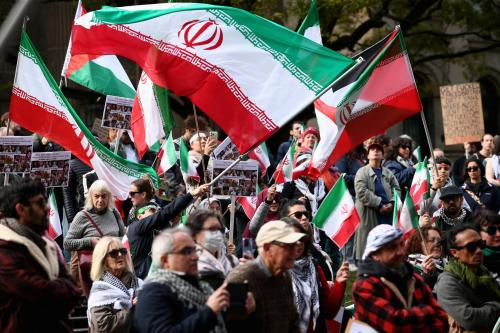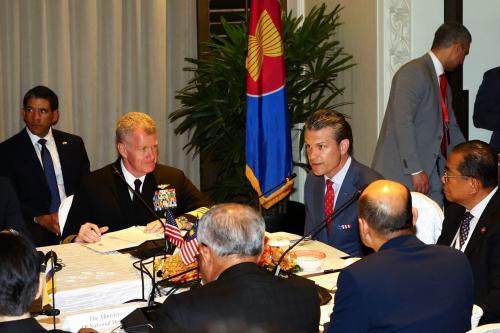The last round of six-party talks produced some surprising results.
Surprising in that the conventional wisdom going into the talks was that both the United States and North Korea would simply stall for time until after the U.S. presidential election in November.
Both turned out to be far more politically astute than most were prepared to give them credit for.
For Pyongyang, the outcome of the November election is far from certain and it understands that it cannot afford to hand a potential second term of Bush hardliners an easy rationale for walking away from diplomacy and embarking down a path toward confrontation. The smarter decision was to stay engaged in the six-party process, neither immediately accepting nor rejecting any U.S. proposal.
Just when it looked like the U.S. approach to the third round of talks would involve the canonization of “CVID” (complete, verifiable, irreversible, dismantlement of nuclear arms programs), the political arm of the White House stepped in to warn that the North Korean nuclear problem threatened to become an election-year issue.
As if that warning wasn’t enough, South Korea appeared to be going its own way and China was poised to publicly chastize U.S. intransigence yet again. The turning point, however, came in the form of advice from Prime Minister Junichiro Koizumi at Sea Island during the Group of Eight Summit. The president relented and the first, but highly conditional, U.S. proposal made its way to the Beijing talks.
Pyongyang also submitted its own proposal to freeze its plutonium-based facilities as a first step toward an ultimate dismantlement in exchange for compensation. The U.S. delegation promised to study the proposal.
The reality is that the United States has no intention of seriously considering Pyongyang’s proposal anymore than Pyongyang intends to accept the U.S. proposal in its current form. Yet, both have pledged to return in September for a fourth round of talks.
Washington has a couple of obvious choices. It could flesh out its proposal in an attempt to show a degree of more flexibility for the benefit of its partners or it could press Pyongyang to accept or reject its proposal as is, setting the stage for a post-November confrontation. However, the wise course of action would be to recognize that a breakthrough in September is highly unlikely and that it would be far more productive for the United States to lay out the highly enriched uranium (HEU) case against North Korea in a credible fashion.
Following the October 2002 confrontation with Pyongyang over HEU, the U.S. delegation briefed Seoul, Tokyo, Beijing and Moscow. Seoul and Tokyo wanted more information, while Beijing and Moscow were skeptical. Chinese skepticism has continued to this day. Shortly before the June round of talks, a Chinese deputy foreign minister publicly called on the United States to provide details of the North Korean HEU program or stop talking about it. In other words, “put up, or shut up.”
Part of the problem we have with our friends and allies is the same we have with Pyongyang. The credibility of U.S. intelligence has come into question because of faulty intelligence about Iraqi weapons of mass destruction (WMD) and our false accusation in 1998 that North Korea was building a secret underground nuclear facility at Kumchang-ri.
In October 2002 when U.S. Assistant Secretary of State James Kelly informed senior North Korean officials that we had irrefutable information that they were engaged in a secret HEU program, the North Koreans immediately responded by saying the accusation was another false claim “just like Kumchang-ri.”
The nuclear crisis has gone on too long. It has potentially resulted in North Korea increasing its nuclear arsenal from two to eight nuclear weapons. It’s time to assuage our allies’ concerns and put the negotiations on track for resolution as soon as possible. The first step should be to confide in our allies, South Korea and Japan, as to the full extent of the intelligence that led us to confront Pyongyang over its secret HEU program in October 2002. We should then inform Beijing and Moscow shortly before the September talks of the case we intend to present during the talks.
This is not the course of action I would have recommended two years ago, but too much time has been wasted and too many opportunities lost. It’s time to put together a strategy that will actually place North Korea’s nuclear program under appropriate controls en route to total dismantlement. What’s needed now is an infusion of clarity that removes any doubts that our friends and allies have and undercuts Pyongyang’s denials. Once that is done, real progress will follow rapidly.
The Brookings Institution is committed to quality, independence, and impact.
We are supported by a diverse array of funders. In line with our values and policies, each Brookings publication represents the sole views of its author(s).



Commentary
Op-edU.S. Should Confide in Allies on North Korean Nukes
August 7, 2004